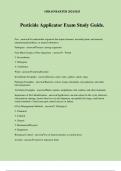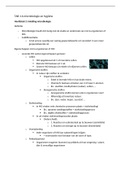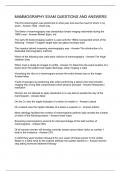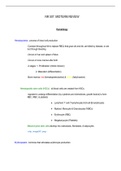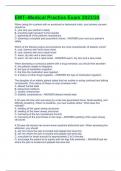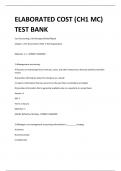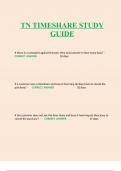Tentamen (uitwerkingen)
Pesticide Applicator Exam Study Guide.
- Vak
- Instelling
Pesticide Applicator Exam Study Guide. Pest - answerAn undesirable organism that injures humans, desirable plants and animals, manufactured products, or natural substances Pathogens - answerDisease causing organisms Four Main Groups of Pest Organisms - answer1. Weeds 2. Invertebrates 3. Patho...
[Meer zien]
